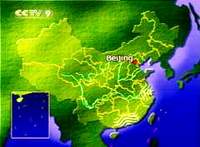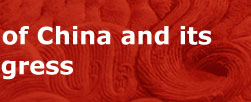|
Closer cross-Straits ties bring economic dividend 
|
| 2002-10-29 13:25:20 |
The Chinese mainland and Taiwan broke the ice in 1987 after 38 years of isolation. The thaw in relations led to a dramatic upsurge in economic activity across the straits. Today the mainland and Taiwan are among each other's top ten trading partners and business links are growing stronger by the day. Despite the fact that a handful of independent-oriented politicians in Taiwan are making troubles causing political tensions across the straits, the two sides are getting on with making money rather than making war.
 The Taiwan style dominates the skyline of the city of Kunshan. The cafes, restaurants and wedding shops are all courting one of the biggest Taiwan communities on the Chinese mainland.
The Taiwan style dominates the skyline of the city of Kunshan. The cafes, restaurants and wedding shops are all courting one of the biggest Taiwan communities on the Chinese mainland.
Kunshan is just one-hour's drive from Shanghai and, over the last decade, it has been transformed into a Taiwan industrial outpost. Ten percent of Taiwan's investment in the mainland has landed here.
Wu's Printed Circuit Company is one of the earliest arrivals. In the past decade, the listed company investment has snowballed, along with its profits.
Michael Lee, vice president of Wu's Printed Circuits, said:" Five years after we arrived, every one of Taiwan's top ten circuit companies piled in. Our assembly line went into production in 1996 and the second year, we had already made a profit."
 The investors were attracted by the mainland's process of reforms and opening-up, which started in the 1980s. In 1994, the central government enacted laws to protect the interests of Taiwan investors. This proved to be a shot in the arm for investors from the island. In two decades, companies from Taiwan have mushroomed to the point of more than 65,000 on the mainland today. And the mainland has become a powerful engine of the island's economic revival.
The investors were attracted by the mainland's process of reforms and opening-up, which started in the 1980s. In 1994, the central government enacted laws to protect the interests of Taiwan investors. This proved to be a shot in the arm for investors from the island. In two decades, companies from Taiwan have mushroomed to the point of more than 65,000 on the mainland today. And the mainland has become a powerful engine of the island's economic revival.
Wang Jianmin, Research Fellow of China Institute of Taiwan Issues, said: "In mid 1980s, the island's economy plunged and small- and medium-sized businesses faced grim pressure to stay competitive. Many of them chose to develop on the mainland and became very successful. Their investment in the mainland market has given new life to Taiwan's economy."
Today, Taiwan's economic presence has shifted from traditional manufacturing in the Pearl River Delta to high-tech industries in the Yangtze River Delta.
And the restrictions on the financial sector have at last been lifted by the Taiwan authority. Chang Hwa Commercial Bank was the first to take up the challenge by opening its mainland representative office in April. They have been waiting to make the move for more than ten years.
 James Shih, Chief Representative of Chang Hwa Bank's Kunshan office said: "We are thinking about it for a long time. But our authority would not open the gate until last August. I hope that we can set up a branch as early as possible, because the market is booming, the earlier we enter, the more chance we'll have."
James Shih, Chief Representative of Chang Hwa Bank's Kunshan office said: "We are thinking about it for a long time. But our authority would not open the gate until last August. I hope that we can set up a branch as early as possible, because the market is booming, the earlier we enter, the more chance we'll have."
Still infrastructure, cutting-edge and capital-intensive industries are still banned by the Taiwan authority from becoming players on the mainland.
But an even greater impediment exists -- the indirect mail, trade, air and shipping services.
 Qi Daofu, chairman of Taiwan Compatriot Investment Enterprises Assoc. of Kunshan said: "All the Taiwan investors on the mainland hope we can have direct links so we can cut costs and time."
Qi Daofu, chairman of Taiwan Compatriot Investment Enterprises Assoc. of Kunshan said: "All the Taiwan investors on the mainland hope we can have direct links so we can cut costs and time."
The Taiwan Council of Economic Planning and Development estimates direct links could save Taiwan businesspeople 700 million US dollars each year.
The Chinese mainland is Taiwan's largest source of trade surplus and Taiwan is the mainland's fourth biggest investor. The murky waters made by the Taiwan authority haven't stopped Taiwan business people from building their fortunes here.
|
|










